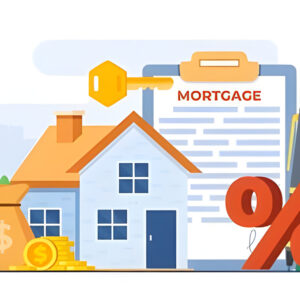In the realm of automotive enthusiasts, vintage cars hold a special allure. These timeless machines evoke nostalgia, craftsmanship, and a unique charm that modern vehicles often struggle to match. However, restoring a vintage car to its former glory isn’t merely a hobby; it’s a passion project that demands significant financial investment. For many enthusiasts, this passion often necessitates seeking financial assistance in the form of loans tailored specifically for vintage car restoration.
The Allure of Vintage Cars
Vintage cars, typically those manufactured between the 1910s and 1970s, represent an era of automotive design characterized by elegance, simplicity, and mechanical artistry. Each vehicle tells a story of its time, reflecting the technological advancements, cultural trends, and societal values of the era in which it was created. Restoring these cars involves meticulous attention to detail, sourcing rare parts, and sometimes even recreating components that are no longer in production.
The Costly Pursuit of Restoration
While the idea of owning and restoring a vintage car is romanticized in popular culture, the financial realities can be daunting. The cost of restoration can vary widely depending on factors such as the car’s condition, rarity, and the extent of restoration required. It’s not uncommon for enthusiasts to invest tens or even hundreds of thousands of dollars into a restoration project over several years.
The expenses involved in vintage car restoration typically include:
- Purchase Price: Acquiring a vintage car in need of restoration can range from affordable bargains to high-priced rarities, often influenced by market demand and the car’s historical significance.
- Parts and Materials: Finding original or high-quality reproduction parts can be challenging and expensive. Restorers often need to scour specialized markets, auctions, and vintage car shows for authentic components.
- Labor Costs: Skilled labor is crucial for tasks such as engine rebuilding, bodywork, upholstery, and painting. Restoring a vintage car often requires a team of experts or specialized workshops, further adding to the overall expense.
- Storage and Insurance: Ensuring the car’s safety during restoration and protecting it with adequate insurance coverage are ongoing costs that enthusiasts must consider.
Financing the Dream: Loans for Vintage Car Restoration
Given the substantial financial commitment involved, many enthusiasts turn to specialized loans designed for vintage car restoration. These loans differ from traditional auto loans or personal loans in several key ways:
- Loan Structuring: Lenders offering vintage car restoration loans understand the unique nature of these projects. They may structure loans to accommodate the staggered nature of restoration costs, with disbursements tied to project milestones.
- Interest Rates and Terms: Interest rates for vintage car restoration loans can vary widely depending on factors such as the borrower’s creditworthiness, the value of the car, and the lender’s policies. Terms may be more flexible compared to standard loans, reflecting the longer timelines inherent in restoration projects.
- Collateral Considerations: Vintage cars themselves can serve as collateral for these loans, although the appraisal process may differ from that of modern vehicles due to the rarity and unique characteristics of vintage cars.
- Specialized Lenders: Some financial institutions specialize in classic car financing, offering expertise in appraising vintage vehicles and understanding the restoration process. These lenders often provide tailored financial solutions that cater specifically to the needs of vintage car enthusiasts.
Challenges and Considerations
While loans for vintage car restoration can make these dream projects more attainable, enthusiasts should approach financing with careful consideration:
- Budgeting and Planning: Detailed budgeting is essential to avoid cost overruns and financial strain. Enthusiasts should factor in unexpected expenses and leave room for contingencies.
- Choosing the Right Car: Selecting a car for restoration involves more than just personal preference. Factors such as availability of parts, restoration expertise required, and potential resale value should also be considered.
- Project Management: Successfully restoring a vintage car requires project management skills. Enthusiasts may need to coordinate with multiple specialists, manage timelines, and oversee quality control throughout the restoration process.
- Long-Term Commitment: Restoring a vintage car is a labor of love that can span several years. Enthusiasts should be prepared for the long-term financial and emotional investment required to see the project through to completion.
The Joy of Restoration
Despite the challenges, restoring a vintage car offers rewards beyond financial considerations. It’s a journey that connects enthusiasts with automotive history, craftsmanship, and a community of like-minded individuals. Each restored car becomes a testament to the dedication and passion of its owner, preserving a piece of automotive heritage for future generations to admire and enjoy.
In conclusion, loans for vintage car restoration serve as a financial tool to support enthusiasts in pursuing their passion for automotive history. By understanding the costs, challenges, and considerations involved, enthusiasts can embark on the rewarding journey of restoring a vintage car with confidence, knowing they have the financial support needed to bring their dream car back to life.
